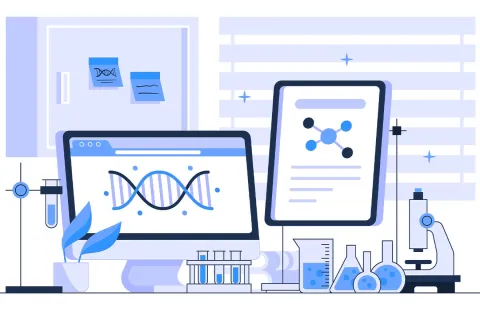
Drug Development Technologies (DDTs) are methods, materials, or measures that assist in drug development and Regulatory review, as stated in the 21st Century Cures Law. These include biomarkers, clinical outcome evaluations, and other metrics. The Food and Drug Administration (FDA) has created qualification programs for biomarkers, clinical outcome evaluations, and animal models for use in accordance with the Animal Rule to support DDT development activities.
On November 30, 2020, FDA launched a pilot program called ISTAND which stands for Innovative Science and Technology Approaches for New Drugs. The primary audience for this pilot initiative is creators of innovative DDTs. Thanks to this pilot project, developers now have a route to submit ideas for novel approaches that don't yet have a Regulatory path.
ISTAND supports the creation of DDTs such as biomarkers, clinical outcome assessments, and animal models for use in compliance with the Animal Rule that is not covered by the current DDT qualifying processes. To expeditiously incorporate novel technologies and scientific approaches in drug development, Regulatory review and, ultimately, to speed the introduction of new therapeutics to patients, ISTAND aims to offer scientific and logistical support to DDT developers and FDA's clinical divisions.
Key Benefits of the ISTAND Pilot Program
- Early access to FDA comments on a tool's development helps enhance both the FDA's and developers' trust in the use of developing technologies under the DDT pathway.
- Possibility of qualifying through the DDT qualification procedure, with the option to provide alternative outcomes if qualification is not the best course.
- New platforms for effective collaboration and knowledge sharing throughout FDA divisions and with external stakeholders, including international Regulatory agencies, will lead to greater agreement and unified opinions from the agency.
ISTAND Pilot Program Submission Process
A multi-step procedure for DDT qualification was legally established by the 21st Century Cures Act. Any person involved in the development of drugs or biologics may utilize a DDT that has been qualified for a given context of usage (COU).
The qualification process includes three submissions:
- Letter of Intent (LOI)
- Qualification Plan (QP)
- Full Qualification Package (FQP)
A Letter of Intent (LOI) is the first document submitted by applicants for the ISTAND pilot program to istand@fda.hhs.gov. The ISTAND pilot program team will analyze the completed LOI after receiving it, advise the applicant whether their entry has been accepted for the pilot, and move on to the technical review. Following assessment by a subject-matter expert, the DDT Committee decides whether to accept a submission into the program depending on several variables. If an LOI or QP submission is accepted, the requestor may move on to the FQP or QP stage, depending on how well they respond to the recommendations and criticisms in the Determination Letter. Applicants cannot move on to the following level unless they are accepted at the LOI or QP stage.
Acceptance of the First Submission by the ISTAND Pilot Program
On September 7, 2022, FDA declared that the first proposal for the program under its qualifying pathway had been accepted by the Center for Drug Evaluation and Research (CDER) and the Center for Biologics Evaluation and Research (CBER). The prospective tool, accepted to be added to ISTAND by the FDA in July 2022, aims to enhance the safety profiles of experimental biotherapeutic drugs utilizing the Membrane Proteome Array (MPA). The company’s context of use (COU) applies to almost every biotherapeutic technique, including CAR-T cells, bispecific, peptides, and immunoglobulin products.
It's quite uncertain if this pilot program will be a huge success as the FDA is assuming it to be. Also, the fact that FDA has mentioned that in the pilot phase, it is anticipating accepting “2-4 submissions in the ISTAND pilot program each year with a triage and selection process that focuses on public health impact and feasibility of implementation.” The other grey area is the timeline required for the qualification process. As compared to the traditional process, the ISTAND qualification looks much more complicated, considering the emphasis on novel products. Consult Freyr for more information.









